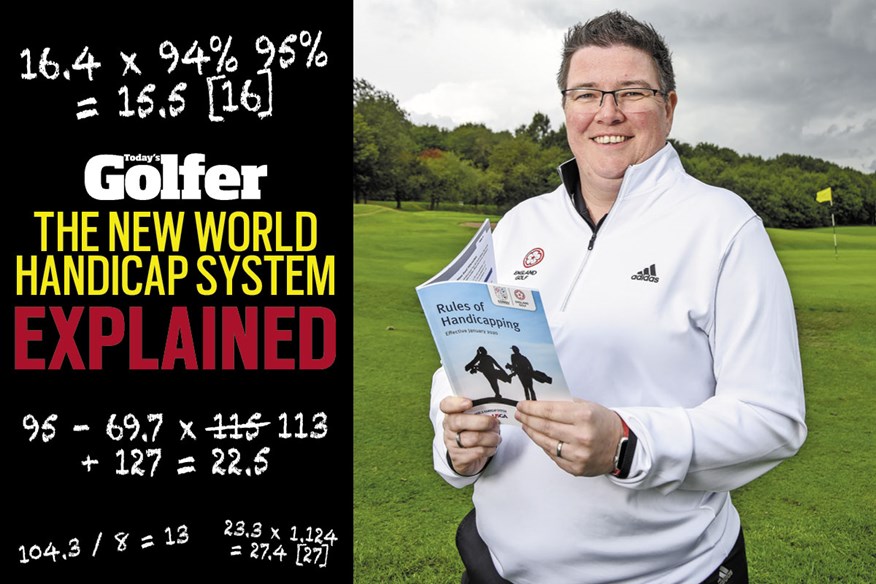How do I get a golf handicap? The World Handicap System explained
Last updated:
How do I get a golf handicap? And how does the World Handicap System work? Use our easy-to-follow guide, compiled with England Golf’s Head of Handicapping and Course Rating.
Have you got to grips with golf’s World Handicap System? The WHS replaced the UK’s CONGU system in November 2020, ensuring a level playing field for amateur club golfers across the globe.
Getting a golf handicap (and understanding it and how it changes once you have one) can seem like a daunting task, but the World Handicap System is actually incredibly easy to use and follow, despite what you may have heard.
To sort the fact from the fiction, we sat down with Gemma Hunter, the Head of Handicapping and Course Rating for England Golf, to help you make sense of everything from playing and course handicaps to slope ratings and handicap allowances.
Having represented CONGU on the World Handicap Operations Committee, there are few people better qualified to explain.
JUMP TO: Our step-by-step guide to the World Handicap System
How is the World Handicap System an improvement on what we had?
The new system is a lot more user-friendly. If you don’t go into all the detail and calculations, which is what the technology is there to do, it is really simple for the average golfer. But perhaps the biggest improvement is that the WHS is equitable around the world, so we are able to compare handicaps in England, Scotland, Wales and Ireland with the US, Canada and Australia.
The previous system didn’t let us do that and if you were to input the handicaps of our scratch golfers into the old USGA system, they would probably be +2 or +3 handicappers because of the way the system works. WHS levels the playing field and makes it fair, not just for the elite player but for everybody who wants to play golf abroad and against other people.
RELATED: Best Drivers
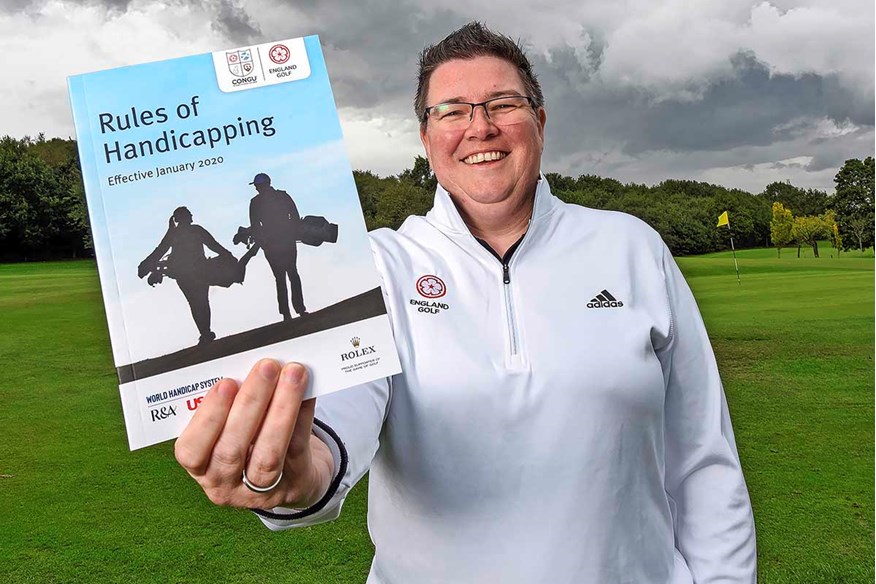
If a golfer thinks their handicap index is wrong, what should they do?
There will be outliers, and we do have a structure in place to address any concerns. But ultimately if a player’s handicap doesn’t look right and the club agrees, the handicap committee has the autonomy to make any adjustments.
RELATED: Best Golf Irons
How many rounds of golf do you need to play to keep your handicap active?
There is no number anymore. Previously it used to be three but as long as you maintain your membership at the golf club, you will maintain your handicap.
What happens if you take a break in golf club membership?
We will always keep your record, so your handicap number and scoring history will remain.
One of the biggest differences under the World Handicap System is that a player’s handicap changes from course to course. How does that work?
Course rating is the starting point. Every golf club is course and slope rated from every set of tees, and then there are separate ratings for men and women. This means that when you go to play a different golf club, your handicap index is actually based on a course of standard difficulty, rather than your home course. So, if you go and play, say, Woodhall Spa, your course handicap may be two or three strokes higher than your handicap index because the slope-rating value is higher than standard.
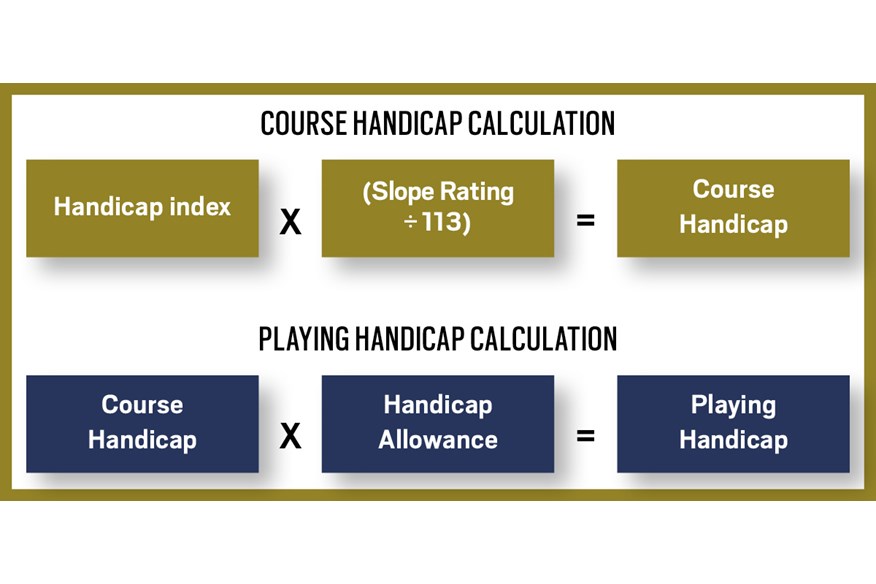
Is slope rating an indicator for how difficult a golf course is?
No. If you are comparing course A to course B, the difficulty is determined by the course rating (what was the standard scratch score) which indicates what score we would expect a scratch golfer to shoot. Whereas, slope rating is used to measure the difficulty of a set of tees for the average bogey golfer (20 for men; 24 for women) compared to the scratch golfer. This number is then used to convert your handicap index into a course handicap.
RELATED: Best Golf Balls for Beginners and High-Handicappers
Is your playing handicap the same as your course handicap under the WHS?
No. When you are playing in a competition, you will receive an allowance that needs to be applied to your course handicap to give you a playing handicap. For singles and strokeplay competitions, it is 95 per cent of your course handicap and that will tell you the number of strokes you will receive. But what we want players to understand is that your course handicap dictates when you can pick up in a Stableford and when to not bother holing out in a match.
Do you enter golf competitions using your handicap index or your course handicap?
If there’s a handicap limit for entry, you will use your handicap index because that is what makes us all equal.
Do you have to submit all scores for handicap?
You can pick and choose to some extent. If it is a competition, those scores have to go in. But if you and I are playing a social game, we can choose whether we want to submit an 18-hole or nine-hole score. However, you can’t go out, play a blinder and then suddenly decide you want to submit your score. You must pre-register prior to play.

If a player submits a ‘no return’, how will that affect their handicap record under the World Handicap System?
Technically, for handicapping purposes you can’t ‘no return’. But if you are playing nine holes, you must complete all nine holes. If you only play five, the score is disregarded because we haven’t got enough holes to say this is a reflective score.
If you are playing an 18-hole round, you must return a score on at least 10 holes. For any holes which are not played, we will allocate a net par for every hole, plus one extra shot, which will give you an 18-hole differential to put into your record. But if you play an 18-hole round and walk off after nine, that score is going in the bin.
Is there a danger that some golfers may try to manipulate their handicap under the WHS?
If a player has failed to submit a score, the handicap committee can replace that score with a penalty score, especially if it is something that keeps happening. So, depending on what the player is trying to achieve, we can counterbalance it by imposing a penalty to either increase or cut your handicap. Ultimately, we can’t build a system to avoid manipulation. That’s why handicap committees and other players play a vital role in checking and challenging those individuals who are trying to cheat.
What do you say to those who think the WHS is too complicated to understand?
That 90 per cent of golfers don’t need to know what all the calculations are. What you do need to know is what your handicap index is and you can find that out via your club’s handicap software or on the England Golf website or app.
Once you’ve got that, you need to convert that number, using a look-up chart or app, into a course handicap for the course and tees you are playing. That’s all you need to worry about because the technology will do everything else for you. The key thing to remember is HCP, so handicap index, course handicap, play golf.

Easy-to-follow guide to the golf World Handicap System
When did the World Handicap System come into place?
The World Handicap System index replaced the CONGU handicap system on Monday, November 2, 2020.
Is it mandatory or can I still use the CONGU system?
It is mandatory with the CONGU system replaced by one single, global system. The WHS is designed so golfers will be able to obtain and maintain a handicap index and use this to compete on a fair and equal basis across any format, on any course around the world.
How is my handicap calculated under the World Handicap System?
Start with your handicap index. This forms the basis for your course and playing handicap. Every score in a player’s handicap record will be converted to a score differential. This is calculated by multiplying the difference between your gross score and the course rating by 113, and dividing by the slope rating of the tees that were played.
That figure then goes forward into a pool of your 20 most recent scores. The best eight are then selected and a simple average is taken to calculate every golfer’s handicap index. Easy, eh? Luckily, you won’t have to worry about this, as the World Handicap System does all the hard work for you.
RELATED: Best Golf Balls for Club Golfers
What if I am new to golf. How do I obtain my golf handicap index?
By submitting scores of 3 x 18 holes, 6 x 9 holes or a combination of both. Revisions take place daily, so once you’ve submitted scorecards totalling 54 holes or more, an initial handicap index will be awarded and based on an adjusted average relative to the number of scores that have been submitted. This will continue until a fully-developed handicap with 20 scores on record is achieved.
Do I have to be a golf club member to get an official handicap?
While that has been the case in the past, anyone can now get and maintain a golf handicap for just £40 per year, thanks to iGolf, England Golf’s digital community.
The platform is open to all independent golfers with a home address in England and will provide them with access to the ‘My EG’ app to post scores, track indexes, calculate course handicaps and engage with friends, in the same way club members do under the World Handicap System.
What’s the difference between ‘course handicap’ and ‘playing handicap’?
Slope rating and course rating are used to determine your course handicap, which represents the number of strokes a player receives from any given set of tees prior to the terms of the competition. If a handicap allowance is applied, the adjusted course handicap is defined as a playing handicap, which represents the number of strokes a player gives or receives for the competition.
How do I calculate my course handicap?
Clubs will either provide you with a ‘handicap calculation conversion table’ or you will be directed to your golf union’s website, where all slope ratings will be listed and a calculator is provided. You will also be able to do it manually by multiplying your handicap index by the course’s slope rating, divided by the “neutral” slope of 113.
Why is the neutral slope 113?
The USGA considers this to be a course of “standard playing difficulty”, though England Golf claim the average GB&I slope rating is 125.
RELATED: Best Mid-Handicap Golf Irons
Hang on, what is a golf course slope rating?
It indicates the standard difficulty of a golf course for the “bogey golfer” relative to the scratch player. Every set of tees has a slope rating and those numbers will vary between 55 and 155. The higher the slope rating, the greater the difference expected between the scores of those scratch and bogey golfers.
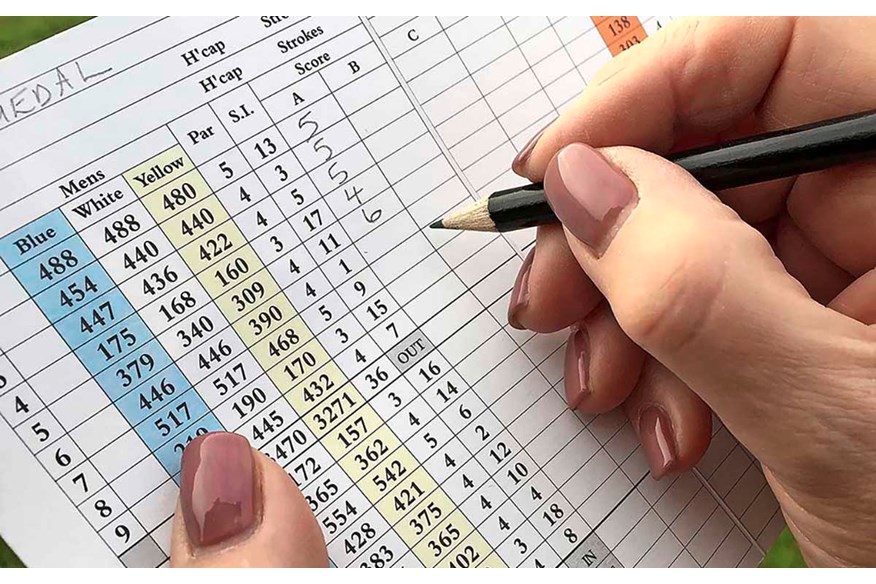
What is a ‘bogey golfer’?
This is the term used when carrying out a course rating. It represents the ability of a golfer (20 handicap for men, 24 for women) on a course of average difficulty.
Does a higher slope rating mean a golf course is more difficult?
No. A course rating, which indicates the number of strokes the scratch golfer is expected to take under normal playing conditions, is the core evaluation of a course’s difficulty. It’s important to remember that the course rating affects a player’s index far more than the slope number.
RELATED: Best Golf Shoes
How are golf courses rated?
All courses are rated under the USGA Course Rating System. There are five factors that are considered for each hole. These are:
– Roll: Assessment of how far a ball will roll on fairways with various surface conditions/contouring.
– Elevation: Difference in elevation between the tee and green and for a player’s approach shot to the green.
– Wind: Average wind strength and direction.
– Forced lay-up: Where a player is forced to play short of obstacles that cross the fairway.
– Dog-leg: Where the dog-leg design of a hole does not allow a full tee shot to be played.
There are also 10 other obstacles that are evaluated on each golf hole:
– Topography: Nature of the stance and lie within each landing zone and approach shot elevation to the green.
– Fairway: The width of fairway landing zones, hole length and nearby obstacles, including trees, hazards and rough.
– Green target: Evaluation of hitting the green with the approach shot and the visibility and nature of the green surface.
– Recoverability and rough: Difficulty of recovery if the tee shot landing zone and/or the green is missed.
– Bunkers: The size, depth and proximity to the landing zone and green.
– Crossing obstacle: Shot length to safely carry water, penalty areas, out of bounds or extreme rough.
– Lateral obstacle: The distance of obstacles from the centre of the fairway and green.
– Trees: The size, density and proximity of trees to the centre of the landing zone/green, shot length to target areas, and recovery difficulty.
– Green surface: Putting difficulty on a green. This takes into account green speed, surface contours and tiers.
– Psychological: Evaluation of the cumulative effect of the other nine obstacle factors.
Each obstacle is given a numerical value, from 0 to 10 (0 being non-existent, 10 being extreme). The process is repeated on every hole and for every tee. Through this data, a scratch and bogey rating is achieved.
Do I need to play a certain number of rounds per year?
Scores will not expire, but your handicap index will only be valid if you’re a member of an affiliated golf club. To maintain an accurate handicap, it is recommended that players return at least 20 scores over a two-year period.
RELATED: Tested – Most Forgiving Drivers

Can I play off any tee?
You may return scores from any tee that has a course and slope rating for your gender.
Do I have to submit my score from every round of golf I play?
It is mandatory to submit all singles competition scores, but you have the option to submit social/recreational scores, as long as they are pre-registered and conform to the Rules of Handicapping and Rules of Golf. Each time a score is submitted, your handicap index is recalculated and updated for the next day of play, or soon after.
Do I use my handicap index or course handicap for competitions?
Competition entry (eligibility) is based on your handicap index. The committee in charge of a competition may set eligibility conditions within their terms of the competition. For example:
– A maximum handicap index limit for entry.
– A maximum course handicap limit.
– A maximum playing handicap.
Is there still a competition standard scratch (CSS) score?
No, but a playing conditions calculation (PCC) will adjust score differentials when abnormal course conditions cause scores to be unusually high or low. This is based on how players have performed compared to their expected performance on that golf course.
How is the PCC calculated if only one player submits a score for handicap purposes?
The PCC can only take place if at least eight acceptable scores have been submitted by players with a fully-developed handicap index of 36.0 or below. It is then applied retrospectively, after your score is posted, within the calculation of score differentials for all players.
– A 0.0 adjustment means the course played as expected.
– A -1.0 adjustment means the course played easier than normal.
– A +1.0, +2.0 or +3.0 adjustment means the course played more difficult than normal.
But what happens if the weather is different in the morning and afternoon?
Only one PCC calculation takes place, so both sets of conditions will be taken into consideration, similar to the existing CSS calculation.
Do buffer zones and annual handicap reviews still exist under the World Handicap System?
Annual reviews will, but buffer zones will not.

If I hit two shots out of bounds and pick up on that hole, can I still submit my score?
Yes. When the format of play allows, you are encouraged to pick up once you have reached your maximum hole score for handicap purposes – which is a net double bogey.
RELATED: Best Golf GPS Watch
What happens if I fail to complete a full nine-hole or 18-hole round because of fading light?
If you fail to play the minimum number of holes required, the score is disregarded. For a nine-hole round, all nine holes must be completed. For an 18-hole round, at least 10 holes must be completed. If you play more than 10 holes but less than 14, you will be allocated net par plus one stroke for the first hole not played and then net par for the remaining holes. If you play 14 or more holes, you will be allocated net par for the remaining holes.
If I submit a ‘no return’ (NR), will I get a 0.1 increase on my handicap?
There are no 0.1 increases under the WHS. Failure to submit your card after a bad round won’t just land you with a bad reputation. The Handicap Committee have the option to apply penalty scores, reset a handicap index, consider disciplinary action, or withdraw a handicap index for an agreed period. Even more reason to front up and accept that everyone has a bad day.
Exception: If you complete more than 10 holes but less than 14 holes in an 18-hole round, net par plus one stroke must be added to the first hole not played.
What happens if there is a delay in a score being returned, either due to tardiness or technical problems?
Scores should be entered before midnight on the same day. Any scores not entered before that time will still be acceptable, but will not be used as part of the PCC.
RELATED: Best Hybrid Golf Clubs
For multi-round golf events such as a club championship, do I use my initial handicap index for each round?
The WHS recommends that the handicap index at the start of the competition is used for each round of the event. However, this must be stated in the terms of competition, and your committee will have the final say.
Do all golf courses in Great Britain & Ireland have their slope and course ratings?
Yes, most ratings were in place in time for the WHS to launch in 2020, but all of the remaining ratings were completed in 2021.
RELATED:Best Putters
Are there still exceptional scoring reductions (ESR)?
Yes, but only if a player submits a score that produces a score differential that is seven strokes or more below their handicap index.
– If the score is 7.0 – 9.9 strokes better: A –1.0 handicap index adjustment will be applied.
– If the score is 10.0 or more strokes better: A -2.0 handicap index adjustment will be applied.

Can I use my handicap abroad?
Yes, your handicap index will be converted to a course handicap for the course (and tees) you are using on the day. If pre-registered, these scores can be returned to your home club for handicap purposes.
How does the World Handicap System prevent handicap manipulation?
There is no limit by which a player’s handicap index can decrease – but a soft cap will “suppress” any increase when the difference between a player’s newly-calculated handicap index and their lowest handicap index in the last 12-month period is greater than three.
This will work by reducing the value of any increase over 3.0 by 50 per cent, so a player’s handicap index will better reflect their underlying ability, rather than a bad run of form. As a second safeguard, a hard cap will then limit any “extreme upward movements” to five strokes.
Annual reviews and exceptional scoring reductions still apply as well.
RELATED: Editor’s Choice Award Winners Revealed
-
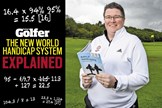 Gemma Hunter is Head of Handicapping and Course Rating for England Golf.
Gemma Hunter is Head of Handicapping and Course Rating for England Golf.
-
 Gemma Hunter is England Golf's Head of Handicapping and Course Rating
Gemma Hunter is England Golf's Head of Handicapping and Course Rating
-
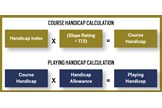 How to work out your handicap when playing a new golf course.
How to work out your handicap when playing a new golf course.
-
 You'll need to submit three 18 hole scores for your handicap.
You'll need to submit three 18 hole scores for your handicap.
-
 Marking golf scorecards.
Marking golf scorecards.
-
 Your handicap will change depending on the course you play.
Your handicap will change depending on the course you play.
-
 Getting to grips with the new World Handicap System.
Getting to grips with the new World Handicap System.
-
 Your current handicap could change.
Your current handicap could change.
-
 The WHS has never been easy to understand.
The WHS has never been easy to understand.
